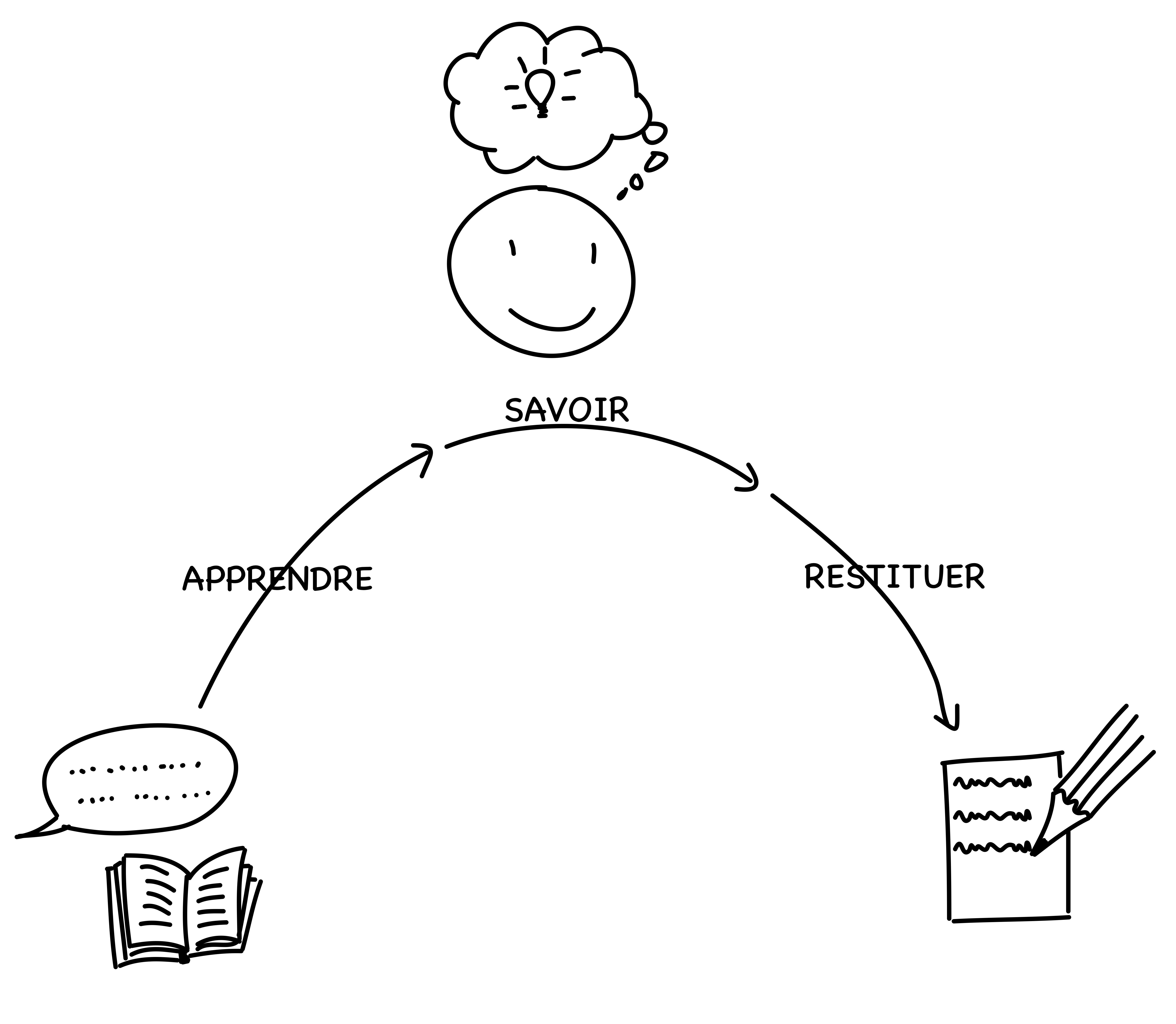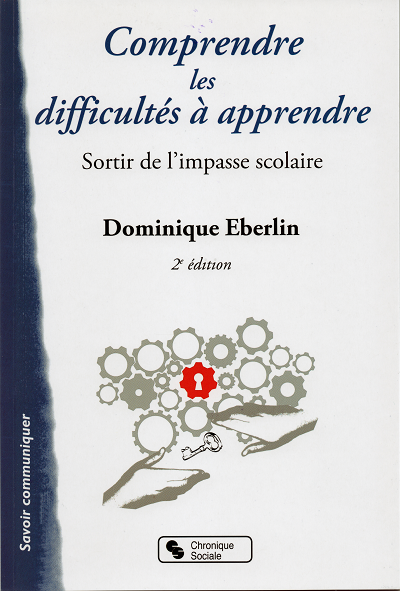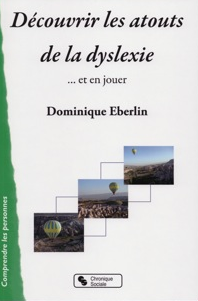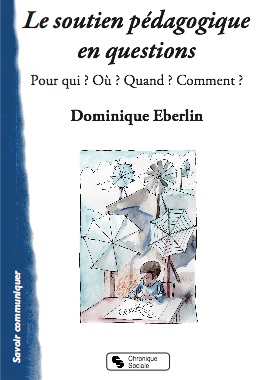Learning strategies
At the intersection of psychology and pedagogy
By Dominique Eberlin (Coaching d’Etude)
The study of learning strategies involves numerous areas of research and approaches, all of which are interested in improving formal learning from kindergarten to university.
On the one hand, this involves learning techniques that are common to all: conscious acts of memorization, which are of pedagogical concern. On the other, this involves cognitive processes which are individual to each person: spontaneous and unconscious acts with which information is treated and which are more properly psychological.
References: Mental management and neuro-linguistic programming
This kind of approach involves modeling based on successes. Starting with the question “What do you do to succeed?” which can be asked of students who succeed at their exams as well as of therapists who lead their patients towards healing, research has allowed us to come up with some models. These are both “structures” which clarify how the successes came about and “examples” which allow us to copy them.

In pedagogy, the work of Antoine de la Garanderie led to the idea of mental management, which is constructed around the following themes:
-learning profiles: a typology of cognitive processes based on the various components of perception (global, linear, aural, visual) or on preferences of evocation (reproduce, represent, conceptualize, interpret)
-mental management: attention, understanding, imagination, memorization and reflexion
-a pedagogical dialogue: a quiz which helps students to become aware of their learning styles
- the management of learning: activities consciously chosen to help in acquiring knowledge and developing skills
-the learning project: personal motivation which influences memorization.
In cognitive psychology, research coming from the Palo Alto school, based on the work of Gregory Bateson, has concerned itself with communication theory, methods of innovation and practices of remediation. Furthering this work, Richard Bandler and John Grinder developed their ideas of neuro-linguistic programming. This approach, functioning both as theory and practice, depends on the observation of the parameters of communication to show certain reproducible models of communication. Below are several of its postulates and tools:
-It is impossible not to communicate: all of our actions, including our silence, carries information.
-Everyone does their best depending on their knowledge, their skills and their beliefs, every one of us chooses what is for them the most efficient action.
-There are no failures, only feedback: communication is a retroactive circle. If answers don’t correspond to the what is expected, the person who is communicating the message changes it.
-_The objectiv_e: Every one of us has the choice to lead her/his life in a way that suits them.
-Reorienting: Each one of us can look at situations from different viewpoints.
-Map of the world: Our view of the world is influenced by our personal filters (visual, auditory or kin-esthetic preferences, beliefs, linguistic distortions).
Communication
All learning is the result of an interaction between two people, either through time via a written communication, or through space via an oral communication. Language allows us to organize our thoughts and to share our ideas.
Applied linguistics proposes models which allow us to understand and master our communication skills. This encourages teachers to create relationships which respect differences with others and for students to increase self-knowledge.
Transmitter, message, recipient, context, code, coding, decoding, feedback, noise, world view, beliefs, reference, signifier and signified, transformational grammar, surface structure and deep structure, intent, verbal and non-verbal, Jacobson’s diagram, the Pygmalion effect, cybernetic
The stages of learning
Current usage combines, under the generic term of “learning”, several stages in a complex undertaking. It is useful here to distinguish several of these stages, to define what is specific to each in order to distinguish in retrospect what comes from work techniques and what from cognitive processes.

To teach….to learn…. to know…to reproduce
1. TO TEACH: to bring information
ingredients: subject matter skills, lesson planning, academic programs, pedagogical relationships and distances (oral or written)
2. TO LEARN: to take in information
ingredients: individual curiosities, perceptual enlargements and preferences (visual, auditive and kin-esthetic), concentration and attention, motivation, learning project
3. TO KNOW: to call up information, make sense
ingredients: preferences for calling up information (visual, auditive or kin-esthetic), understanding, imagination, memorization and reflexion, building a mental image)
4. TO REPRODUCE: to apply knowledge
ingredients: creativity, conformity, adaptation and calibration to the differing contexts being reproduced.
The typology of learning styles
 Based on empirical evidence of individual preferences in learning style, this typology sets out in tree structure the parameters of each of the stages. The combinations of these different parameters define the different mental models for learning.
Based on empirical evidence of individual preferences in learning style, this typology sets out in tree structure the parameters of each of the stages. The combinations of these different parameters define the different mental models for learning.
Brought out through observation of how academic subject matter is acquired, these models are, in reality, being worked on constantly in our everyday lives. The brain considers every moment, every happening as something new and approaches everything from the same angle. No matter what environment a person is in, no matter their age or their competence, their profile is the same.
Perceptual preferences:
global: to know how it will end before starting a task
linear: to start a task without knowing how it will endvisual: to use visual aides to understand (photos, graphs, sketches, outlines)
auditive: to get oral explanations of what is being presented (course, dialogue)
kin-esthetic: to feel comfortable with and interested in what is being presented
(tranquility, amiability, inherent interest)
The Parameters of Evocation:
1. Reproduction: the brain faithfully takes in reality, it refers it to concrete objects, to known experiences, it looks for the usefulness of the information received. The person wants to know “what use is this”?
2. Representation: the brain notes every detail, refers to working procedures, looks for the rightness and the justice in the information to be processed. The person wants to know “how to act.”
3. conceptualization: The brain extracts the general idea, creates connections, looks for meaning and logic. The person wants to “understand why it should act.”
4. interpretation: The brain interprets reality, transforms it and registers a DIFFERENCE: The person wants to “do it differently.”
Mental models:
visual: the brain creates a memory to look at. It keeps the colors and the shapes, the outlines. The person “sees what it is about.”
auditive: the brain creates a memory to listen to. It keeps the sounds, the intonations of voices, the words and the messages received. The person knows the subject when it “speaks to him.”
kin-esthetic: the brain creates a felt memory. It keeps impressions, feelings. The person “feels that it is about this certain thing.”
Preferences for restitution:
visual: the person wants to show things. He/she is more at ease with written exams, with giving back information from a distance.
auditive: the person want to be listened to. He/she is more at ease in oral exams, in reporting back with dialogue.
kin-esthetic: the person wants de demonstrate. He/she is more at ease with a personal execution (dance, song, handicraft, an individual expression)
Pedagogical interest
Everyone can learn easily when he/she is motivated by the task at hand, when they have a personal project and when the information is brought to them in their preferred way. Basing teaching on giving priority to meeting individual needs and using a rich choice of learning strategies brings a triple benefit.
Students and teachers who know their learning styles, have accepted them and know how to use them will have the best results in school and the greatest satisfaction with their studies.
The teachers and professors who understand the particularities of the different learning styles can vary their practices, propose working strategies that are personalized and help their students to succeed.
A school which recognizes the diversity of learning styles and is organized to exploit this knowledge can propose a framework for preparing well-integrated citizens.
To explore, watch or listen
Eberlin Dominique, Comprendre les difficultés à apprendre, Chronique Sociale, 2010.

Eberlin Dominique, Découvrir les atouts de la dyslexie …et en jouer, Chronique Sociale, 2012.

Eberlin Dominique, Le soutien pédagogique en question. Pour qui ? Où ? Quand ? Comment ?, Chronique Sociale 2016.

LIVRES :
-
Altet Marguerite, Desjardins Julie, Étienne Richard, Paquay Léopold, Perrenoud Philippe, Former des enseignants réflexifs obstacles et résistances, De Boeck, 2013.
-
Bandler Richard, Grinder John, Les secrets de la communication, Éd. de l’Homme, 2005.
-
Baruk Stella, Échec et math, Seuil, 1976.
-
Baruk Stella, L’âge du capitaine, Seuil, 2000.
-
Bateson Gregory, Vers une écologie de l’esprit, Seuil, 1977 tome 1, 1980 tome 2.
-
Beauchez Jérôme, L_’empreinte du poing_, EHESS, 2014.
-
Bissonnette Steve, Richard Mario, Comment construire des compétences en classe, Chenelière, 2010.
-
Crahay Marcel, Peut-on lutter contre l’échec scolaire ?, De Boeck, 1996.
-
Damasio Antonio, L’erreur de Descartes, Odile Jacob, 2010.
-
Davis Ronald, Eldon M. Braun, Le don d’apprendre, Desclée de Brouwer - La Méridienne, 2004.
-
Davis Ronald, Eldon M. Braun, Le don de dyslexie, Desclée de Brouwer - La Méridienne, 2012.
-
Dehaene Stanislas, Apprendre à lire: des sciences cognitives à la salle de classe, Odile Jacob, 2011.
-
Dehaene Stanislas, La Bosse des maths: quinze ans après, Odile Jacob, 2010.
-
Dilts Robert, Des outils pour l’avenir, Desclée de Brouwer, en réédition.
-
Dilts Robert, Être Coach, de la recherche de la performance à l’éveil, InterEditions-Dunod, 2008.
-
Doise Willem, Mugny Gabriel, Psychologie sociale et développement cognitif, Armand Colin, 2003.
-
Domènech Francesch Joan, Éloge de l’éducation lente, Chronique sociale, 2011.
-
Faure Jean-Philippe, Éduquer sans punitions ni récompenses, avec la Communication Non-Violente, Éd. Jouvence, 2005.
-
Hall Edward T., La dimension cachée, Points Essais, 1978.
-
Howard Glasser et Jennifer Easley, Les enfants difficiles, comment leur venir en aide, Ed. Pearson Education, 2008.
-
Giordan André, Apprendre ! Belin, 1998.
-
Giordan André et Saltet Jérôme, Apprendre à apprendre, Librio, 2007.
-
Goigoux Roland et Cèbe Sylvie, Apprendre à lire à l’école - tout ce qu’il faut savoir pour accompagner l’enfant, Retz, 2006.
-
Gordon Thomas, Enseigner et être soi-même, Enseignants efficaces, Éd. de l’Homme, 2005.
-
Gosselin Brigitte et Michel, Surdoué et échec scolaire, Éditions le Sémaphore, 1999 ( indisponible ).
-
Grangeat Michel et Meirieu Philippe ( dir. ) La métacognition, une aide au travail des élèves, ESF, 1997.
-
Hoeg Peter, Smilla ou l’amour de la neige, Points, 1996.
-
Kerdellant Christine, Le prix de l’incompétence, histoires des grandes erreurs du management, Denoël, 2000
de La Garanderie Antoine, Apprendre sans peur, Chronique Sociale, 1999. -
MacLean Paul, Guyot Roland, Les trois cerveaux de l’homme, Laffont, 1990.
-
Ouzilou Colette, Dyslexique, vraiment ? Et si on soignait l’école, Albin Michel, 2014.
-
Perrenoud Philippe, Dix nouvelles compétences pour enseigner, Invitation au voyage ESF 2013
-
Pörtner Marlis, Écouter, comprendre, encourager, l’approche centrée sur la personne, Chronique Sociale, 2010.
-
Montelle Christian, La parole contre l’échec scolaire, la haute langue orale, L’Harmattan, 2005.
-
Reuter Yves, Une école Freinet. Fonctionnements et effets d’une pédagogie alternative en milieu populaire, L’Harmattan, 2007.
-
Reuter Yves, Panser l’erreur à l’école, de l’erreur au dysfonctionnement, Presses Universitaires du Septentrion, 2013.
-
Revol Olivier, Même pas grave ! L’échec scolaire, ça se soigne, J’ai lu, 2007.
-
Rosenberg Marshall B., Enseigner avec bienveillance, instaurer une entente mutuelle entre élèves et enseignants, Éd. Jouvence, 2006.
-
Rosenberg Marshall B., Les mots sont des fenêtres (ou bien ce sont des murs) Éd. Syros, 1999.
-
Rosenthal Robert A., Jacobson Lenore, Pygmalion à l’école, Casterman, 1971.
-
Saint-Laurent Lise, Enseigner aux élèves à risque et en difficulté au primaire, Gaétan Morin, 2008.
-
Schab Lisa M., J’ai confiance en moi et en ma personnalité, La boîte à livres éditions, 2009.
-
Siaud-Facchin Jeanne, Aider l’enfant en difficulté scolaire, Odile Jacob, 2008.
-
Siaud-Facchin Jeanne, L’enfant surdoué - l’aider à grandir, l’aider à réussir, Odile Jacob, 2012.
-
Siety Anne, Les mathématiques apprivoisées, pour en finir avec les blocages en maths, Hachette Littératures, 2006.
-
Viannin Pierre, L’aide stratégique aux enfants en difficulté scolaire, De Boeck, 2009.
-
Vermersch Pierre, L’entretien d’explicitation, ESF, 2011.
-
Vité Laurent, Alliances de travail et enseignement spécialisé, éclairage sur le travail en réseau, SZH/SPC, cop., 2000 ( Éducation spéciale ).
-
Watzlawick Paul, Comment réussir à échouer, Seuil, 1991.
-
Watzlawick Paul, La réalité de la réalité, Points essais, 2014.
-
Watzlawick Paul, Le langage du changement, Points essais, 2014.
FILMS :
- Clint Eastwood, Invictus.
- Tom Hooper, Le discours d’un roi.
- Stéphane Meunier, Les yeux dans les bleus.
INTERNET :
Myers et Briggs
http://www.myersbriggs.org
Robinson Ken. Changement de paradigme dans le système d’éducation
https://www.youtube.com/watch?v=qZnqDTFsMFs
Ryan Tony
http://www.tonyryan.com.au<br>
http://thinkerskeys.com
Seguin Edouard
http://silapedagogie.weebly.com/edouard-seguin.html<br>
https://fr.wikipedia.org/wiki/Édouard_Séguin
Protin Matthieu
http://multimalin.com<br>
